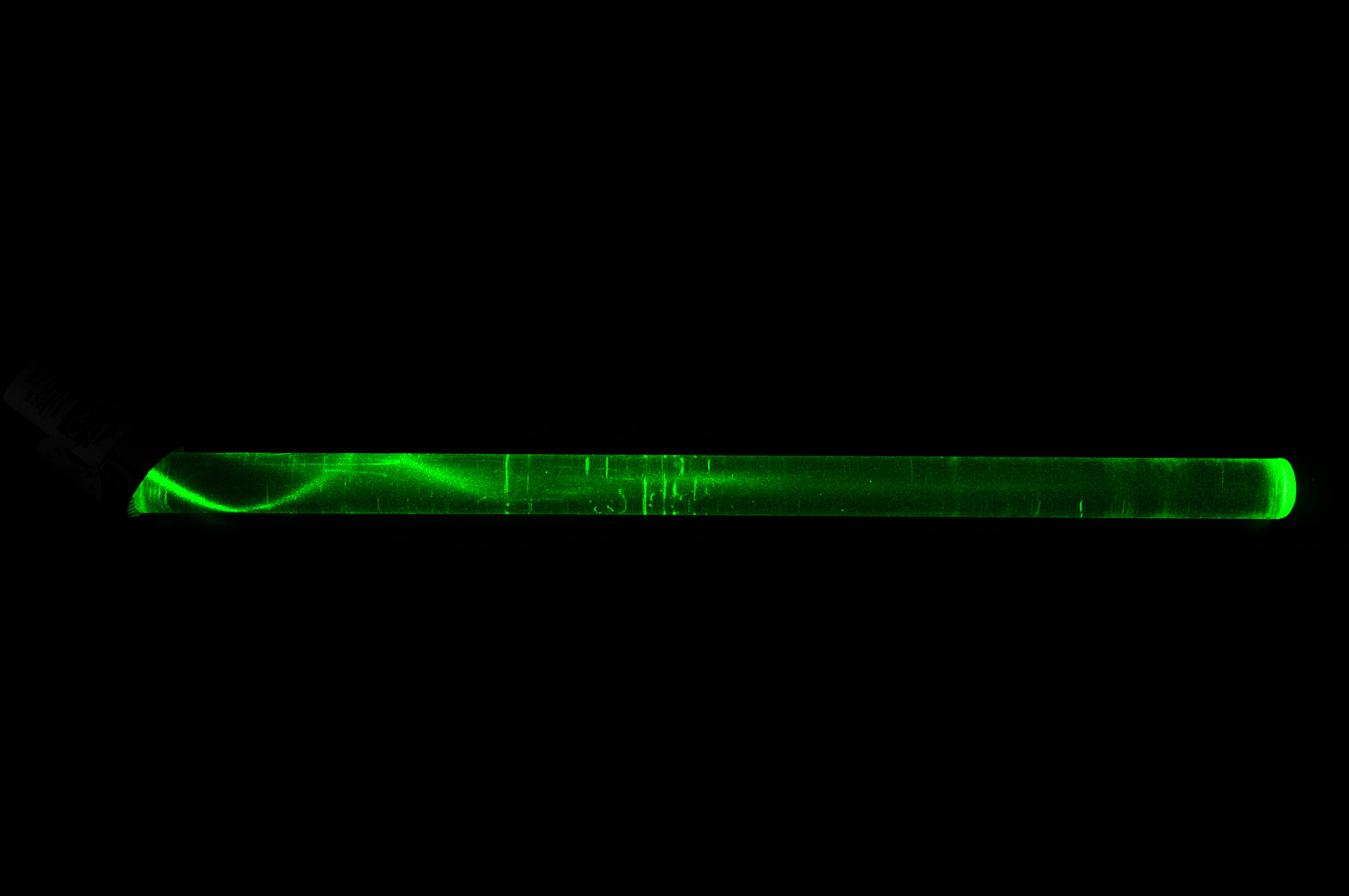How Quantum Physics Solves the Ancient Problem of Secret Communication
Impossibilities can reveal new possibilities.
Don’t look. Hades’ warning still rang in Orpheus’ ears as he reached the upper level of the underworld. Keep his eyes forward and keep climbing until he reached the surface and his wife Eurydice would return to the world of the living with him; look back for even a moment and she would be sucked back into the darkness forever. Yet now, so close to the light, a dissenting voice entered his mind. No one can see us here, so how will anyone know if I look? The act of looking itself can’t change anything. So why wait? Emboldened and impatient, he turned around eagerly. Yet no sooner had Eurydice entered his sight than she began to fade into the eternal darkness. Orpheus stood alone, haunted by the unheeded warning he would rue for the rest of his life… Don’t look.
Don’t look could be a mantra of quantum physics just as surely as for Greek myth. No less than for Orpheus, our own experience tells us that looking alone cannot change reality. Historically, scientists too assumed that a system can always be observed without being altered. Yet, remarkably, modern physics says otherwise. According to the laws of quantum mechanics, it is generally impossible to look at a quantum system, and to make measurements of its properties, without altering it. So if you wish for a quantum system to continue undisturbed, then you had better remember the fate of Eurydice and suppress your Orphean hubris.
But, magic of Hades aside, how can it be that just looking at an object can change it? When we drop our preconceptions and consider the question closely we find that it is not really so strange at all. Indeed, far from being an incomprehensible mystery, this effect transpires to be a useful practical tool that is being used to solve a problem that would have been familiar even in Orpheus’ time — sending secret messages.
A Taste of Quantum Measurement
While it may seem odd, the idea that making a measurement of an object can change it is actually a normal part of human experience. Imagine I give you an unfamiliar new fruit and ask how it tastes. You may try to guess from the look, feel and smell of the fruit. But ultimately, the only way to know for sure is to take a bite. It is only by bringing a part of the fruit onto your taste buds that you can directly observe its taste. Yet this act of biting the fruit irreversibly changes it; the fruit is no longer intact, and anyone can now see that the fruit has been tasted. So, a piece of fruit seems to be like a quantum particle — it is changed by measuring it!1
However, while we may accept that tasting a fruit necessarily leaves a mark, other senses appear to be different. For example, it certainly seems that we can read a book without altering it. But this is an illusion. Seeing text on a page depends on light shining onto the paper and then reflecting back into our eyes. The exact way in which the light reflects depends on the colouration of the page, and so transfers the information of the page to us in a way that allows our brain to reconstruct what is written. However, the light consists of many tiny particles called photons constantly bombarding the page. Over time, these photons degrade the ink. This leads the words to fade, as can be seen in old manuscripts. So every time a book is opened to be read, it is slightly altered by the action.

The reason that this alteration is so weak is that the text on the page is extremely large compared to the scale of a photon. Specifically, the ink that makes up each letter contains about a hundred billion billion atoms.2 Each photon can at most substantially alter the state of a single atom. This means that each letter can withstand an immense number of photons hitting it, and so be read innumerable times, before it is significantly damaged. But imagine that instead each letter were written into the state of a single atom. Then even a single photon could substantially affect it, and so it would be impossible to read the text without altering it.
This is why measuring objects in quantum mechanics necessarily changes them. Quantum mechanics deals with the smallest things that exist in nature — like atoms and their constituent subatomic particles. Measuring an object always involves probing it in some way. If the tool used to probe the object is very small compared to the object being studied — like photons on a page of text — then the mark left by this probe is so small that it can be ignored. However, if the tool is comparable in size to the object being studied — like teeth and a tongue being used to taste a fruit — then the object will be fundamentally altered. Since quantum mechanics deals with the smallest things that exist, there is no tool that is smaller than them, so measuring them necessarily alters them. Even if we use light instead of our mouths, measuring a quantum particle is more like tasting a fruit than reading words on a page.
Quantum Mechanics: The Key to Secrecy
The impossibility of observing quantum particles without altering them may seem lamentable. Superficially, it seems like a challenge that could undermine the usefulness of technologies based on quantum physics. But this is too pessimistic! In fact, this seeming inconvenience has the potential to be an invaluable tool. To see how, we must simply ask: could it ever be helpful to have information that cannot be accessed without leaving a mark?
Framed this way, there is a very natural application of the effect — secret communication. Whether military generals, imprisoned queens or forbidden lovers, people have sought for millennia to send messages that are impossible for a malicious interceptor to read. This can be achieved using secret codes or ciphers. This involves substituting the letters of a message for other letters according to a set of rules known as the key. This is known as enciphering the message. To anyone without the key, the enciphered message will be unreadable gibberish. But a person with the key can use it to decipher the message — reversing the substitution of letters to determine the intended message.
Nevertheless, there are two ways in which enciphered messages can fail. One possibility is that an interceptor could work out the key by examining the message or other publicly available information. For example, over two thousand years ago Julius Caesar used a basic cipher in which each letter was shifted three places forward in the alphabet. This was effective at the time but today can easily be broken by any cryptanalyst, as naive twenty-first century mobsters and terrorists have learnt the hard way. Indeed, the intervening millennia have seen a succession of increasingly sophisticated ciphers being invented only to eventually be undermined by clever code breakers. However, in 1945 Claude Shannon showed that there is a cipher that utterly solves this problem — the one-time pad cipher. Shannon proved mathematically that it is absolutely impossible to ever decipher a message enciphered using this cipher without knowing the key. This cipher seems to offer hope of perfectly secret communication!

However, even the one-time pad cipher has a weakness. If an interceptor gains access to the key then they can read enciphered messages just as easily as the intended recipient. This means that the key must somehow be communicated from the sender to the recipient in a way that is impossible to intercept. For the one-time pad cipher, this problem is particularly severe because the key must be just as long as the message that is to be sent. This makes encipherment with a one-time pad cipher seem to be something of a catch-22.; you can only communicate secretly with the one-time pad cipher if you already have a way to communicate secretly without it. This is called the key distribution problem.
But this is where quantum mechanics comes in! Imagine that instead of writing the one-time pad cipher key on paper, we write it into quantum particles. Then, it is impossible for anyone to read it without altering it. This alteration leaves a mark that the sender and recipient can check for. So, we can send the key by whatever channel of communication we have, even if it is insecure. If an interceptor reads the key, we will know this, and so can agree never to use the key and to instead try sending a new key. On the other hand, if the key arrives unmarked, then we know that it is safe to use for our secret messages. In this way, we can solve the key distribution problem and achieve perfectly secret communication! This approach is called quantum key distribution.
The Quantum Future — And Present
Quantum Computers Are A Bank Robber’s Best Friend explained how quantum computers could undermine the online encryption we rely on to protect secret information like our bank passwords. But we can now see that quantum technologies also provide a more than compensatory alternative. Today’s online enryption sacrifices perfect security for easier key distribution. But with quantum key distribution, we no longer have to choose between these priorities. We can have practically implementable, perfectly secure communication. Perhaps bank robbers may come to rue the power of quantum mechanics after all!
Indeed, unlike quantum computers, quantum key distribution is not just a technology of the future. It is already being used! A network has already been built in China that allows for messages protected by quantum key distribution to be sent between major cities across distances of thousands of kilometres. Meanwhile, telecommunications companies and businesses with an interest in security are trialling it for consumer use. The time when quantum key distribution is a part of everyday technology may not be so far away.

This is a remarkable turn of events. We can now see that, while the curious effects of quantum measurement do prompt many profound questions, the basic fact that measuring a quantum particle changes it is not truly strange. It is a natural consequence of the type of systems quantum physics studies. Yet even so, it seems counterintuitive that a fundamental constraint of nature — that you cannot avoid altering a quantum particle when you measure it — should be helpful rather than inhibiting. But, of course, what is a constraint for my adversary is an advantage for me. It is a hallmark of the scientific mind to see all sides of a problem, and to find opportunity even in limitation. Ultimately, quantum key distribution demonstrates a profound manifestation of this spirit: impossibilities can reveal new possibilities.
This analogy between quantum particles and fruit is due to, and explored in further depth by, Anne Broadbent. For example, see here.
One page of printed text uses about 1 mL of ink and contains about 1000 letters, so each letter uses about 1 μL of ink. Since ink is primarily water, this is about 1 mg. This contains about


Hi Paul, a wonderful clarification of why observation alters the behaviour of quantum stuff. But I am still unsure how this would work if for example you are doing the double slit experiment in a room with the light on (with photons flying around) then surely “the apple has been bitten” regardless of whether an observer is there. That is, it seems that the observer effect is simply caused by the person turning on the light to look??